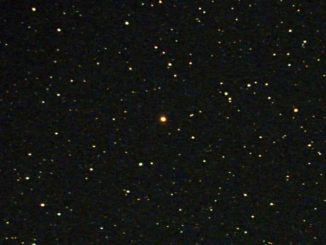
Lyra



Find Barnard’s Star, the Sun’s closest stellar neighbour visible from the UK
Barnard’s Star is a familiar name in both the history of astronomy and popular culture, but did you realise that it’s the closest stellar body to the Sun that you can see from the British Isles and similar latitudes? We tell you some fascinating facts about this famous runaway star and show you how to locate it.

Seeing multiple stars: Lyra’s other double-double
The diminutive yet distinctive constellation of Lyra is home to dazzling star Vega, the Ring Nebula (M57) and the celebrated double-double star epsilon (ε) Lyrae. But did you know that Lyra harbours yet another ‘pair of pairs’ that are somewhat easier to resolve in smaller telescopes? Ade Ashford shows you how to locate the beautiful Struve Σ2470 and Σ2474.


See Comet 45P’s close brush with Earth in the pre-dawn sky
Comet 45P/Honda–Mrkos–Pajdušáková passes just 0.08318 astronomical units (7.73 million miles, or ~32 lunar distances) from Earth on the morning of 11 February. Early risers can catch the magnitude +7 comet speeding through the constellations of Hercules, Corona Borealis (CrB) and Boötes at up to 9 degrees/day.

Seek out the celestial treasures within the Summer Triangle
At the beginning of August, keen observers in the heart of the UK can celebrate the return of truly dark skies around 1am BST. But the naked-eye stars are out by 11pm, and if you cast your gaze two-thirds of the way from southeast horizon to overhead at this time you can see the so-called Summer Triangle in all its glory. Here’s our guide to some of the celestial highlights therein.

See Comet 252P/LINEAR in a moonless sky
On the afternoon of 21 March, Comet 252P/LINEAR brushed by Earth just 14 lunar distances away. The comet’s separation from Earth now exceeds 20 million miles, but it’s still a suitable target for binoculars and small telescopes — if you know exactly where to look. Here’s our UK observing guide for 252P/LINEAR in the constellation Ophiuchus between midnight and moonrise over the coming week.
